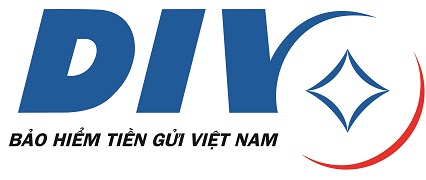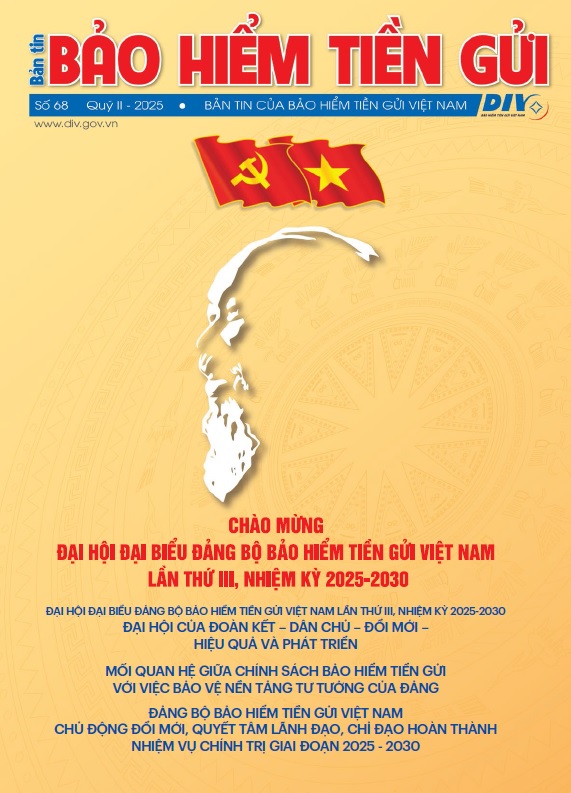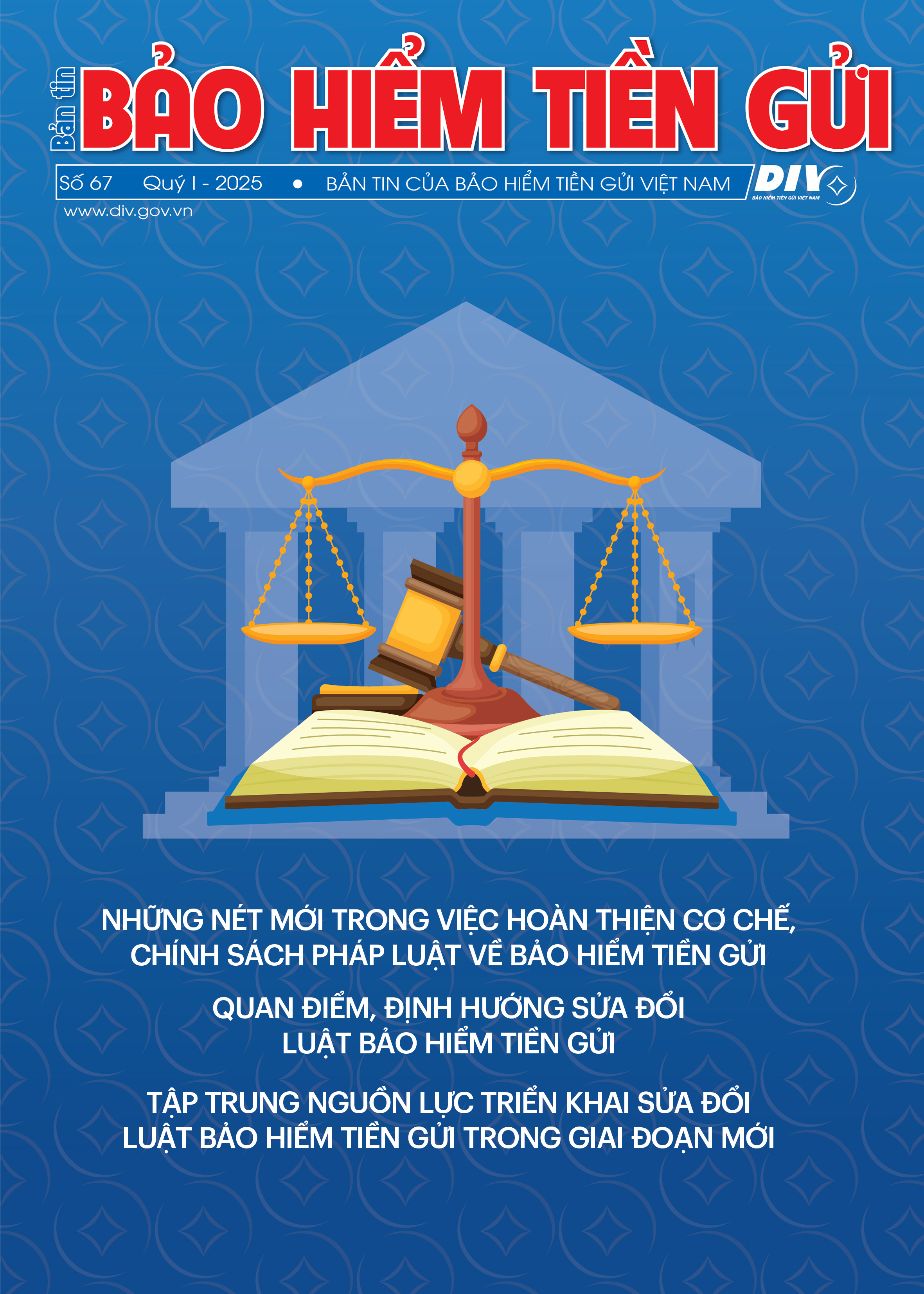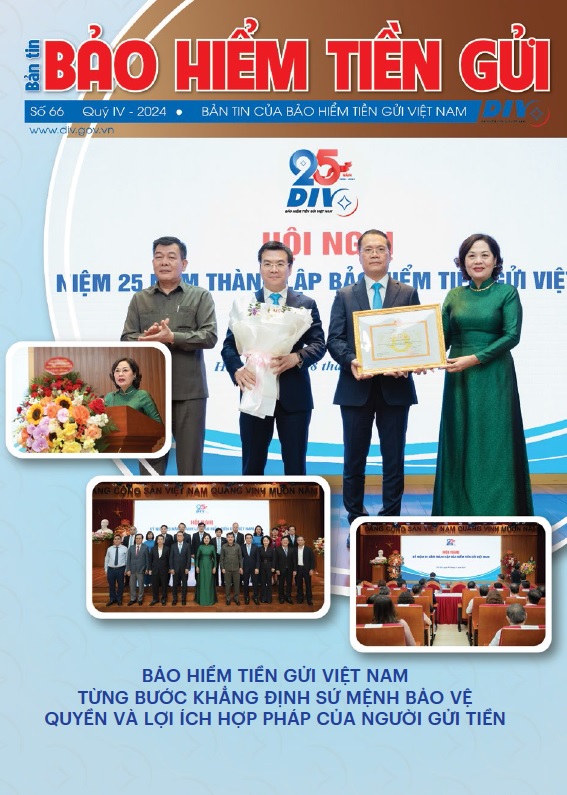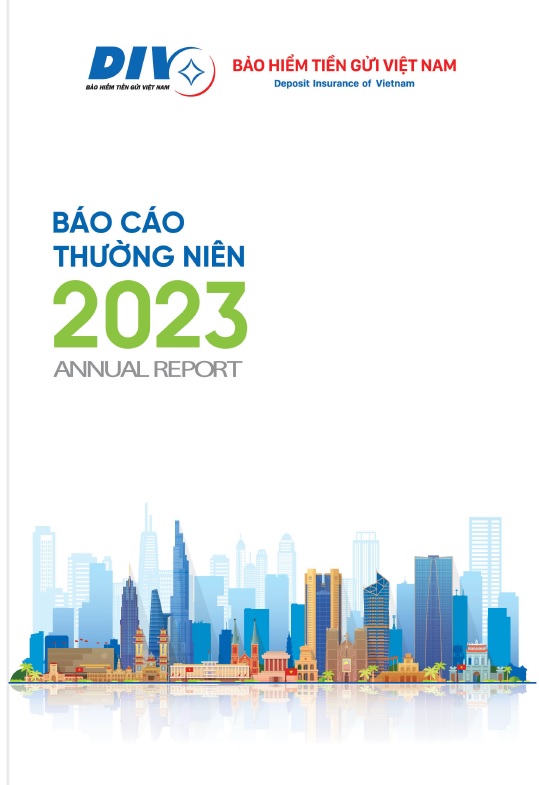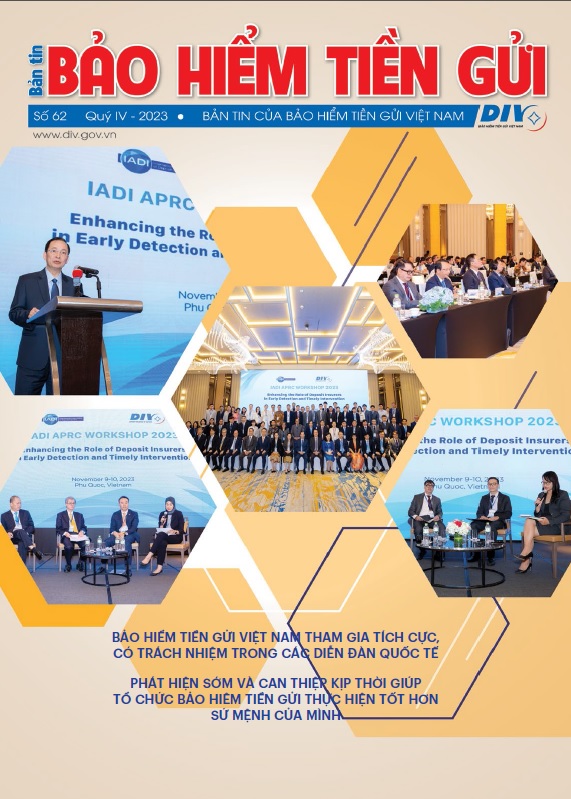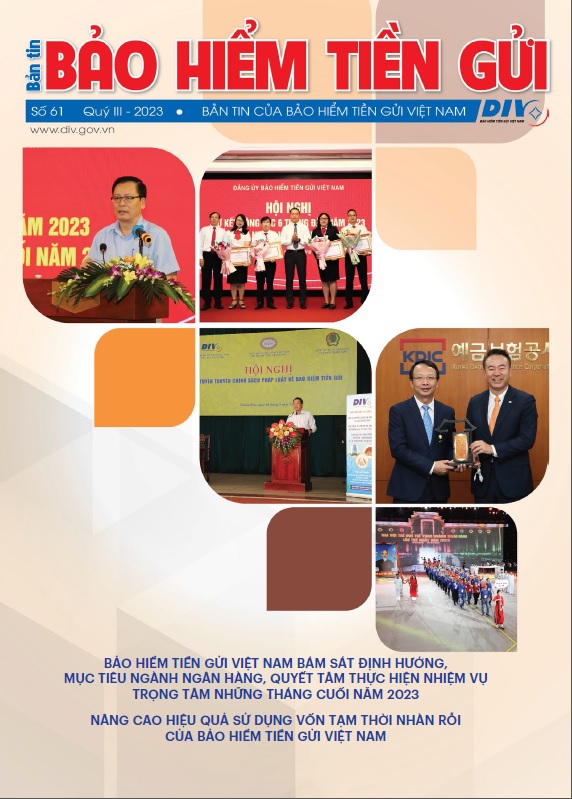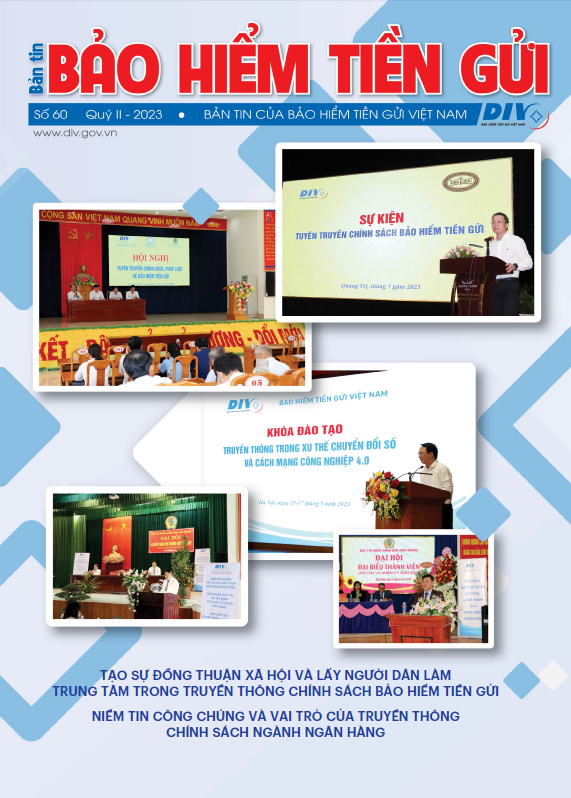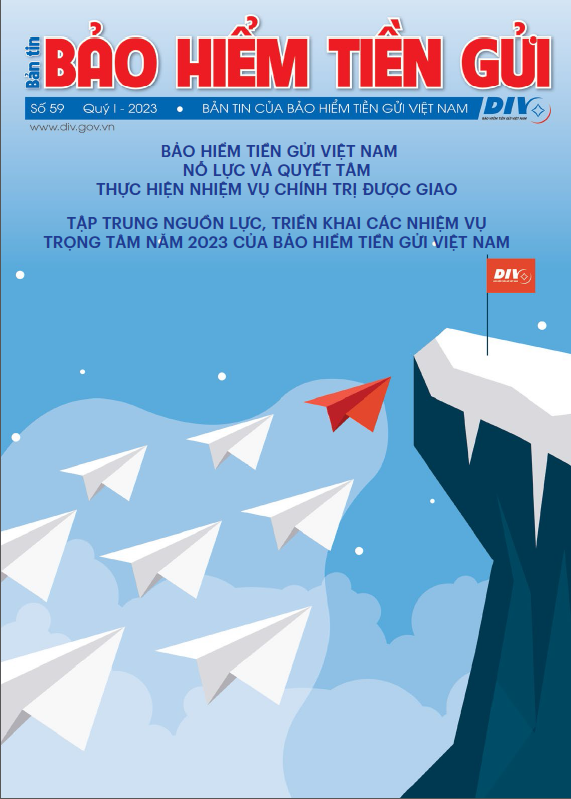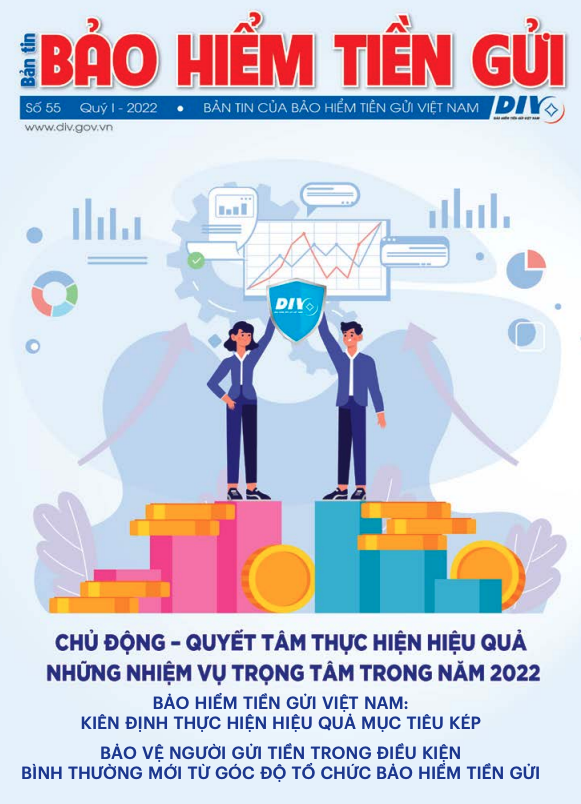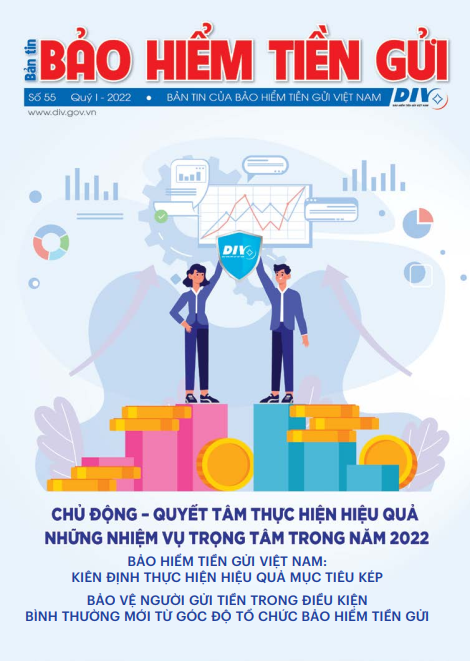Like other deposit insurance systems worldwide, the DIV was established to: (1) Protect small, retail and uninformed depositors; (2) Contribute to guarantee the stable operation of the financial banking system and prevent failures in the system and (3) Contribute to improving the fair competition among the financial entities and streamlining the development of the financial system. Generally speaking, the three separate objectives, in fact, are closely interrelated, of which the one to protect depositors stays on top of priority.
With respect to the objective of protecting depositors (also contributing to the achievement of other two objectives), in 2014, the DIV should stay focused on three notable issues of the Law on DI as follows:
Firstly, the determination of appropriate coverage in case the deposit taking institutions face liquidity difficulties or failure is extremely important. Taking into consideration the direct impact towards the legitimate rights of depositors, the deposit taking institutions and the financial market, the limit of State’s payout must guarantee its impact on as many depositors and as much deposits as possible. However, regarding the indirect impact, that the coverage level is too high and the scope too wide will result in the public indifference and dependence when judging the credit rate and the quality of the credit institution to deposit money with. A part from this, it will lead to the deposit taking institutions’ abuse and taking advantage of DI policy, violations of ethical professional standard whereas they lack the attention to improve their operation and strengthen their risk management. In turn, this will increase the risk of illiquidity and failure of the deposit taking institutions and the sector as a whole. That is why countries pay full attention to the determination of appropriate coverage limit for each specific period.
In fact, almost all countries tend to set their coverage limit higher and higher, not least during the crisis, many countries were committed to pay 100% of the deposits. It helps stabilize public confidence and actually the depositor rights are ultimately protected.
In Vietnam, for such a long time (since 2005), the coverage limit has been set at 50 million VND. Especially during the sensitive period, the State Bank of Vietnam (SBV) guaranteed the full pay-out for depositors; therefore assure them in order to prevent bank runs. Hence, the regulations, commitments and recent resolution experience in reality in Vietnam have protected the rights of depositors and contributed to stabilizing the financial market.
However, in the coming time, when Vietnam’s economy is expected to continue growing, per capita GDP increasingly flares up; the deposits from the public will accordingly go up. At the same time, demand for stabilizing the sentiment of depositors is also high. Additionally, that the price level in Vietnam is increasingly high accompanied by the on-going restructuring of the financial credit institutions perhaps affects the sentiment of depositors. As the result, the re-determination of compensation level and increase of the coverage limit to better protect depositors, strengthen the streamlining and stabilization of the financial market during the restructuring process is very important.
Secondly, the premium rates applied to the insured institutions need to be more positive and proactive. In principle, the premium rates have to manifest the responsibility of the deposit taking institutions towards the depositors in case of failure.
In practice, there are two premium systems which depend on the development level of the financial market and the capacity of the regulator, supervisor and deposit insurer. The first one is assessing the flat rate applied consistently to all deposit taking institutions. Flat rate premium systems have the advantage of being simple and easily applicable. However, it does not take into account the differentiation between the responsibility of the institutions and the prudential level for depositor’s rights, thus does not encourage and promote competition among deposit taking institutions supposedly embedded in the market economy. That is why this method merely is applied to infant markets and underdeveloped supervisory authorities where the risk profile of the deposit taking institutions is difficult to assess. The second method of premium assessment is based on the risk profile of the deposit taking institutions. The higher the risk level of the institution is (which means higher possibility of failure), the higher premium it will have to pay. This method fixes the problem of the flat rate system in the sense that it encourages the deposit taking institutions to improve their operation and avoid risk taking. It therefore protects better the rights of depositors and at the same time ease the burden on the State budget in case of failure. However, the differential premium systems require soundly developed and transparent financial market with the authority assessing the risks of the deposit taking institutions precisely and objectively, as well as the deposit insurer equipped with proper enforcement capacity.
In the mean time, in Vietnam, the DIV adopts the flat rate premium system. This system has been appropriate with the development level of Vietnam’s financial market as well as the capacity of the management authority, supervisors and the DIV recently. Nevertheless, as the financial market expands, risk exposure (including the risk that the deposit taking institutions pose to depositors) becomes diversified and greater. Hence, the Law on Deposit insurance created a legal basis and prerequisite for the establishment of the risk-based premium system to better protect the rights of depositors. The year 2014 perhaps is a good starting point to adopt this system.
Thirdly, establishing the mechanism of the effective information exchange, collection and processing.
As discussed above, the primary objective of the deposit insurer is to protect the rights of unsophisticated depositors who lack access to assess and verify the activities and risk exposure of the deposit taking institutions. To that end, there should be a mechanism in place to determine and implement effectively and consistently both two information channels:
(1) Between depositors and deposit taking institutions: allow depositors to directly assess the deposit taking institutions, therefore, they are able to protect themselves. In this respect, depositors mostly take advantage of their own assessment ability based on the market information and the deposit taking institutions themselves, directly and indirectly, officially or unofficially.
(2) Among regulators, market supervisors, deposit insurer and deposit taking institutions. Accordingly, the rights of depositors are protected through their confidence in the information and assessment of the regulators, financial market supervisors and deposit insurer. Hence, depositors fully depend on regulators, financial market supervisors and deposit insurer.
To achieve this, in practice (especially during the financial crisis), various information exchange mechanisms are adopted to protect depositors; however, there is no one-size-fits-all model for all countries. As the result, until now, most countries take into account their typical conditions to determine the information exchange mechanism.
In Vietnam, there are basically two information channels in place. Let alone the second channel, apart from the official information released from regulators and supervisors as provided by existing laws, the Law on DI clearly regulates that the insured institutions will directly report to the State Bank, then the State Bank will disclose information to the DIV. This article is new and different from previous regulations.
The new regulation will facilitate and simplify the report and information collection of DIV (only one contact point) as well as make it systemic, timely, precisely and sufficiently. It also facilitates the deposit insurer to make reports and avoids overlapping and duplicable. However, it will affect the proactiveness of the DIV in accessing information.
Hence, so as to promote the DIV’s mandate of protecting the rights of depositors, the regulations with respect to the mechanism, contents of and responsibilities for information exchange between the DIV and SBV, among the DIV and other regulators, supervisors and the insured institutions should be issued soon.
Among the three above issues, the coverage limit and the deposit premium are closely, coherently and dialectically linked and should be adjusted at the same time. Information exchange mechanism is the prerequisite for the DIV to successfully fulfill their duties. Besides, it will be more efficient if the related authorities and the DIV consistently implement the making of following bylaws: Organization, functions, mandates, financial mechanism of the DIV.
As long as these issues are addressed, it is strongly believed that the Law on DI will be enforced successfully. The DIV will then successfully fulfill its mandates to protect the rights of depositors.
